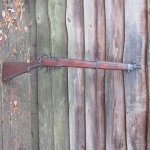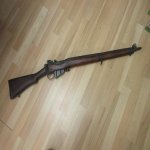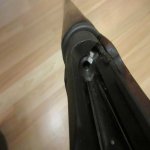Many years ago, I worked at Prestolite. Among many products we made were automobile alternators and starting motors. One of the many jobs I did there was phosphating the shafts. These were run through a vapour phase degreaser, hung on hooks, and immersed in the heated solution. Being new steel, they took a uniform finish. When I am cleaning up used parts, particularly salvaged parts from basket case guns, I like to blast before finishing, because it produces a uniform surface, which contributes to a uniform finish.
In the plating shop where the phosphating took place, we also blued spark plug shells. The shells were placed in perforated square steel buckets. These buckets were immersed four at a time in a hot Oakite solution to degrease the shells, rinsed in water, and then immersed in molten sodium nitrate. The buckets were manouvered using a steel pole with a couple of pegs on the end, and a sort of oar lock yoke. You really wanted to be sure you had shaken all the water out of the buckets before lowering them into the molten nitrate.
In the same factory there was also a line where we made 2.75" rocket warheads. Did most of the operations making those. This was during Vietnam. Our warheads went to Redstone Arsenal to be filled, then the Port of San Francisco for shipment to Vietnam.




















































































